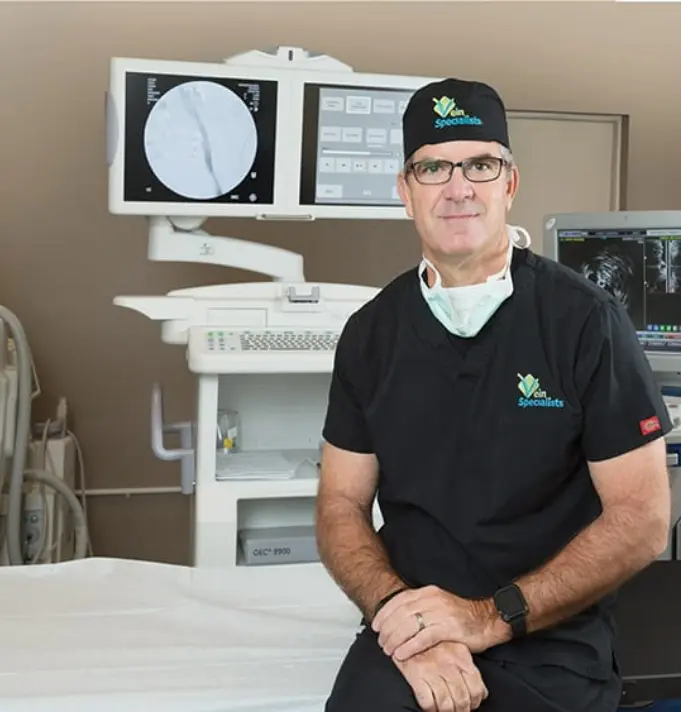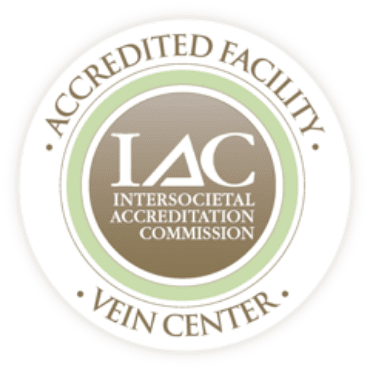 Joseph G. Magnant, M.D., F.A.C.S., R.P.VI.
Joseph G. Magnant, M.D., F.A.C.S., R.P.VI.
Restless legs syndrome, or RLS, is believed to affect as much as ten percent of the population in the United States. A patient, Laura, is among that group, but it wasn’t until she was older that her RLS symptoms really began to distress her.
It was in the evenings and at night when Laura’s restless legs would cause her distress and disrupt her. This late-in-the-day onset of symptoms is a primary characteristic of RLS. The most commonly reported symptom of the syndrome is a throbbing, creeping or crawling sensation in the legs. This uncomfortable feeling leads to an uncontrollable, and many times overwhelming, urge to move the legs in order to get relief.
“The RLS affected me most when I would sit for long periods, like traveling on an airplane or watching a movie in the evening,” says Laura. “In order to relieve my legs, I’d have to get up and walk around. It became pretty unbearable.”
“Most nights, right before I am about to fall asleep, my legs would ache so bad that I would have to get up and walk around just to alleviate the uncomfortable feeling. It caused me to kick my legs and toss and turn in bed throughout the night.”
After doing some research on the various causes RLS, Laura scheduled an appointment to have her veins evaluated to see if she could get any relief. She underwent a venous insufficiency ultrasound examination to identify if there was underlying venous insufficiency that could be causing her RLS. The ultrasound results showed severe leakiness in the great saphenous vein (GSV).
Venous contribution
Veins are blood vessels that are specially designed to pump blood back toward the heart, against the force of gravity. Inside the veins are a series of one-way valves that open and close with the rhythm of muscle contractions. Healthy valves close tightly, keeping blood moving upward toward the heart. With vein disease or venous insufficiency, the valves do not close properly, causing symptoms.
Venous insufficiency has many signs and symptoms and they go beyond the visible varicose veins. They include achy legs, swollen legs and skin discoloration and ulceration. Vein disease can also be a contributing factor in the development of RLS.
Call Or Request An Appointment
Contact us to schedule an appointment with our expert Vein Specialists team. We will evaluate your signs and symptoms, answer your questions, and create a personalized vein care treatment plan to relieve your leg pain and enhance your life.
Schedule Your Appointment TodayWith venous insufficiency, the valves of the deep and/or superficial veins of the lower extremities are either stuck or scarred in the open position or, more often, are floppy and continue to open, or prolapse, beyond the closed position. This results in reflux, or backward blood flow in the veins, which produces increased hydrostatic pressure in the downstream venous system.
Typically, the normal pressure in healthy veins, veins in which the valves are closing properly, is approximately ten millimeters of mercury at the level of the ankle when a patient is standing. If the valves are leaking from the groin all the way down to the ankle, by the end of the day the pressure could be as high as fifty or sixty millimeters of mercury. All of that extra pressure causes fluid to leak out of the veins into the skin, fat and muscle, causing pain and swelling.
It is thought that the return of this fluid, which contains water and protein, from the muscles back into the lymph vessels at night, when the legs are elevated, can trigger a cellular electrolyte imbalance and the symptoms of RLS. Thus, RLS symptoms often go hand-in-hand with venous insufficiency. However, not everyone with RLS has venous insufficiency, and not everyone with venous insufficiency has RLS.
We recommend that, before patients start taking prescription medication for restless legs syndrome, they request a consult by a qualified vein specialist. He or she will likely order an ultrasound evaluation to identify whether there is significant underlying venous insufficiency that might be causing or contributing to their problem.
There is no downside to getting an ultrasound; there is no radiation involved, no needles, no pain and it is a physiologic test that reveals which veins are leaking and how much they are leaking. Venous ultrasound for insufficiency is conservative and noninvasive, and it accurately identifies which patients are most likely to benefit from treatment.
Clearly, other causes of RLS exist, however, we encourage patients to consider venous insufficiency as a contributing factor and to request a venous insufficiency evaluation by an experienced vein specialist prior to undergoing a million-dollar workup for other diagnoses or initiating medical therapy for RLS.
Patients are simply unaware that a disease process is causing their symptoms and, further, that the disease can be treated. More often, patients tend to accept the way their legs feel and attribute the achiness or restless legs to the normal result of aging, heredity or being on their feet all day.
Request an Appointment
Please take a moment and fill out your request below and one of our staff members will be in contact within 24-48 business hours. If this is an emergency, call 911 immediately. If this is a non-emergent concern, please call the office Monday-Friday between 8am – 5pm at: 239-694-8346

